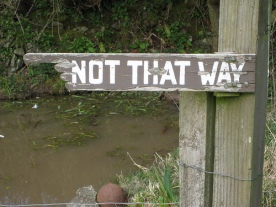I, along with two of my colleagues (Anand Rao & Dick Findlay), recently conducted a workshop at the World Research Group’s Predictive Modeling conference at Orlando. As part of the workshop, I spoke about a list of 8 things that organizations should keep in mind as they consider investing in predictive analytics.
In this post, I will list the 8 points and discuss the first one. Subsequent posts will explore the rest of the themes.
- Understand the cost of a wrong decision
- Strategic and operational decisions need different predictive modeling tools and analysis approaches
- Integration of multiple data sources, especially third-party data, provides better predictions
- Statistical techniques and tools are mature and by itself not likely to provide significant competitive advantage
- Good data visualization leads to smarter decisions
- Delivering the prediction at the point of decision is critical
- Prototype, Pilot, Scale
- Create a predictive modeling process & architecture
Theme 1: Understand the Cost of a Wrong Decision
Is it even worth investing the resources on developing…
I, along with two of my colleagues (Anand Rao & Dick Findlay), recently conducted a workshop at the World Research Group’s Predictive Modeling conference at Orlando. As part of the workshop, I spoke about a list of 8 things that organizations should keep in mind as they consider investing in predictive analytics.
In this post, I will list the 8 points and discuss the first one. Subsequent posts will explore the rest of the themes.
- Understand the cost of a wrong decision
- Strategic and operational decisions need different predictive modeling tools and analysis approaches
- Integration of multiple data sources, especially third-party data, provides better predictions
- Statistical techniques and tools are mature and by itself not likely to provide significant competitive advantage
- Good data visualization leads to smarter decisions
- Delivering the prediction at the point of decision is critical
- Prototype, Pilot, Scale
- Create a predictive modeling process & architecture
Theme 1: Understand the Cost of a Wrong Decision
Is it even worth investing the resources on developing a predictive analytics solution for a problem? That is the first question which should be answered. The best way to answer it is to understand the cost of the wrong decision. I define a decision as ‘wrong’ if the outcome is not a desired event. For example, if the direct mail sent to a customer does not lead the desired call to the 800 number listed, then it was a ‘wrong’ decision to send the mail to that customer.
A few months ago my colleague Bill told a story which illustrates the point.
Each year Bill takes his family to Cleveland to visit his mom. They stay in an old Cleveland hotel downtown. The hotel is pretty nice with all the trappings that you would expect of an old and reputable establishment. Last time they decided to have breakfast at the hotel across the street at the Ritz. After the breakfast when Bill and his family were in the lobby, the property manager spotted him and the kids and walked over to talk. He chatted for a few minutes and probably surmised that Bill was a reasonably seasoned traveler and told the kids to wait for him. He walked away and came back with a wagon full of toys. He let each kid pick a toy out of the wagon. Think about it. They were not even guests at the Ritz, all they did was have breakfast at the Ritz! The kids loved the manager and Bill remembered the gesture. Fast forward to this holiday season, and sure enough Bill and his family booked a suite at the Ritz for six days. For the price of a few nice toys, the manager converted a stay that generated a few thousand dollars in room charges, meals, and parking.
Now suppose Bill did not go back to the hotel, which was the desired outcome by the hotel manager. What would have been the cost of manager’s ‘wrong’ decision? The cost of a few toys. The cost compared to the potential upside is negligible. Does it make sense for the hotel to build a predictive model to decide which restaurant diners to offer toys so that they come back and stay? I don’t think so.
Understanding the cost of wrong decision upfront saves one from making low value investments in predictive analytics.
